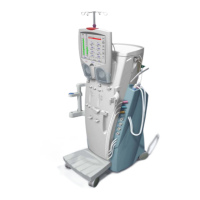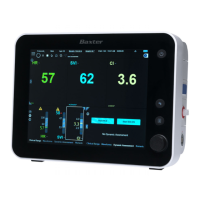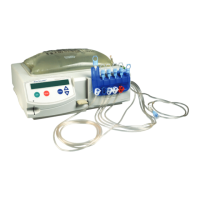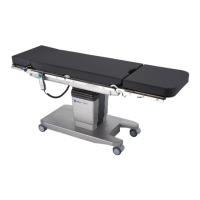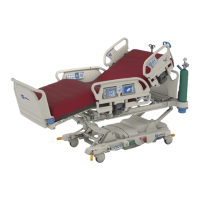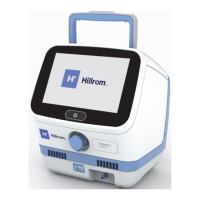What to Do During a Power Outage
If the machine loses power, a backup battery will temporarily power the
blood unit. All settings and actual values will be saved.
The blood pump and heparin pump will continue to operate using
battery power, but dialysate preparation will stop. The machine will
enter bypass mode.
The backup battery will work for a limited time. A fully charged battery
in good condition will last at least 30 minutes.
If the power outage is expected to last for more than a few minutes,
consider discontinuing the treatment.
Using the Machine During
a Power Outage
When power is restored, the machine turns on automatically and asks
the user to confirm the restart.
The treatment will resume from where it left off, and all settings and
actual values will be saved. However, the user must double check all
treatment settings.
Continuing Treatment
After a Power Outage
If the blood pump cannot be started, the user may manually rinseback
blood to the patient.
Since the alarm will not play while the machine is turned off, you must
consider the risks that may occur during manual rinseback.
1. Close the arterial blood line and patient access clamps.
2. Disconnect the arterial blood line from the patient.
3. Connect the arterial blood line to the rinseback line, and open all
clamps on the arterial blood line, rinseback line, and infusion line.
4. Remove venous line from venous line clamp.
5. Open the blood pump door.
6. Rotate the blood pump counter-clockwise to return the blood.
Check that no air enters the patient.
7. Once rinseback is completed, clamp the venous blood line and
patient access clamps.
8. Disconnect the venous blood line from the patient.
Manual Rinseback Process
Manual Rinseback
AK 98 TROUBLESHOOTING
24
Note:
During manual procedure to
return blood to patient during a
power failure, the operator shall
take full responsibility for visually
monitoring all safety parameters
that cannot be monitored by the
machine during a power failure
(for example, air detection).

